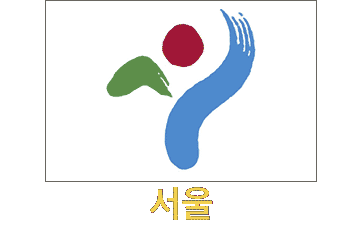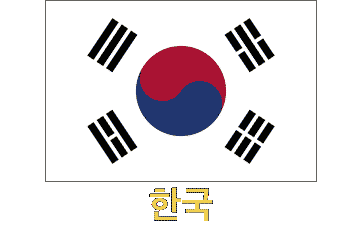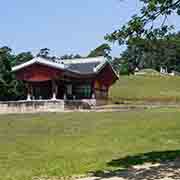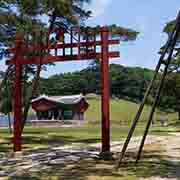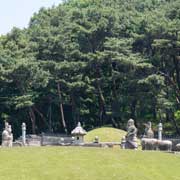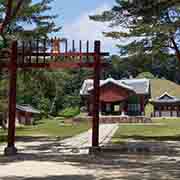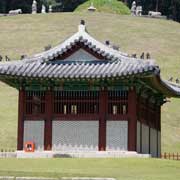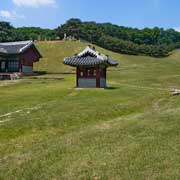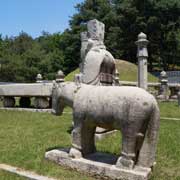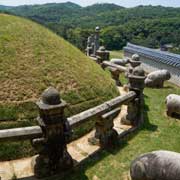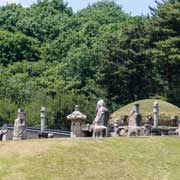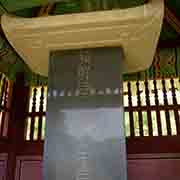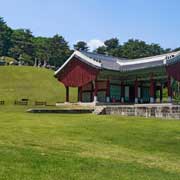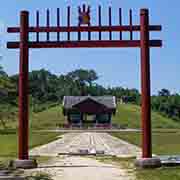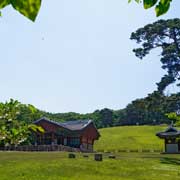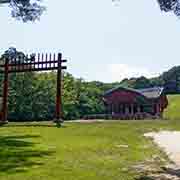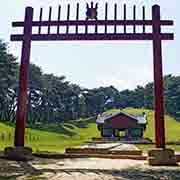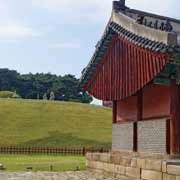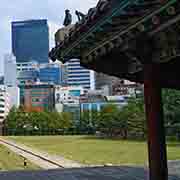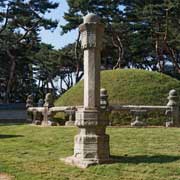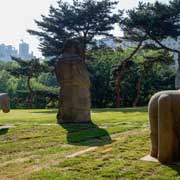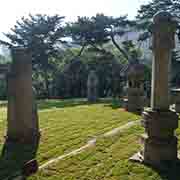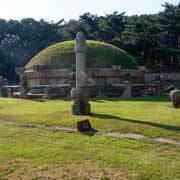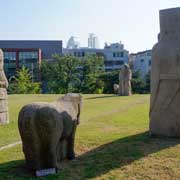Photos of Royal Tombs of the Joseon Dynasty, Korea
Royal Tombs of the Joseon Dynasty
There are forty tombs of members of the Korean Joseon Dynasty (1392–1910) scattered in over 18 locations across South Korea - built to honour and respect the Joseon Kings and Queens and their achievements, they also served to assert Royal authority.
you may then send it as a postcard if you wish.
Donggureung (“East Nine Royal Tombs”), in a large forest area in Guri, Gyeonggi Province, on the northeastern periphery of Seoul. It is the largest cluster of Joseon Dynasty royal tombs in South Korea; there are nine royal mausoleums and seventeen graves of seven Kings and ten Queens. The nine royal mausoleums include Geonwolleung, the tomb of the Joseon Dynasty’s founder King Taejo (1335-1408). The newest tomb here is Gyeongneung, holding the remains of King Heonjong, who ruled from 1834 to 1849, and his wives Queen Hyohyeon and Queen Hyojeong, representing the evolution of Joseon-style tomb architecture for five hundred years.
In the heart of Gangnam-gu, the busy district south of the Han River in Seoul, is Samreung Gongwon “Three Tombs Park”. It has Joseon-era burial mounds and attendant statues of King Seongjong, who ruled from 1469 to 1494, King Jeongjong, who ruled from 1506 - 1544 and Queen Jeonghyeon Wanghum, who was King Seongjong’s second wife.
